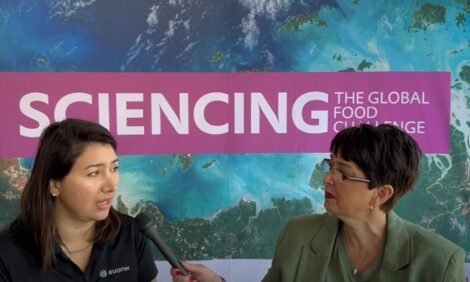



Leman: Mammary development of the gilt
Improve sow lactation by stimulating gilt mammary developmentSows do not produce enough milk and colostrum to ensure optimal growth and survival of all their piglets. This is most important considering the current use of hyperprolific sow lines. One avenue to improve sow lactation performance is to stimulate mammary development of gilts via nutritional or management strategies, yet timing is crucial. It is only from 90 days of age until puberty, during the last third of gestation and during lactation that any treatment can have an impact on mammary tissue.
A presentation by Chantal Farmer, Agriculture and Agri-Food Canada, Sherbrooke Research and Development Center, during the 2024 Leman Swine Conference noted that feed restriction of gilts from 90 days of age until puberty decreases mammary development. However, if average feed intake over that period is 2.7 kg/day, future milk yield will not be impeded. The addition of phytoestrogens (i.e. 2.3 g/day of genistein) in the diet of prepubertal gilts increases the number of milk-synthesizing cells.
Body condition is important and gilts that are obese (36 mm backfat) or too lean (12 to 15 mm backfat) in late gestation will have less developed mammary tissue. Overfeeding energy in late gestation appears to be detrimental. On the other hand, providing 40% more SID lysine than estimated requirements as of day 90 of gestation, via an increase in soybean meal in the diet, led to 44% more mammary parenchyma (containing milk-synthesizing cells), but the same was not true in multiparous sows.
Hence, parity affects the response of mammary tissue to nutritional treatments. Feeding in the last week of gestation (from approximately 108 days of gestation to farrowing) can impact colostrum yield. A very low feed supply (1.5 to 1.8 kg/day) tends to be detrimental, and colostrum yield is maximal with a daily intake of 3.0 kg.
Management in late gestation and early lactation is also important for colostrum production. Inducing farrowing too early (day 109 of gestation) will decrease colostrum yield. On the other hand, giving a single injection of a very high dose of oxytocin (75 IU) in the 12 to 16 hours following the end of farrowing prolongs the colostral phase. This leads to an improvement in the quality of milk in early lactation via greater concentrations of immunoglobulins insulinlike growth factor-1 (IGF-1).
Management of primiparous sows in early lactation will affect their milk yield in the second lactation. During the first two days of lactation, special care must be taken to ensure that all teats of primiparous sows are suckled because teats that are not suckled in first lactation will produce less milk in second lactation. It is evident that feeding and management of replacement gilts is crucial to enhance their mammary development and maximize their future milk and colostrum yields.







